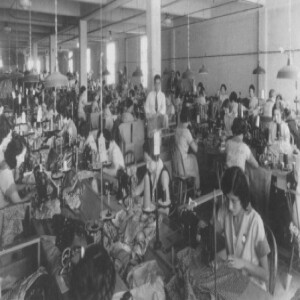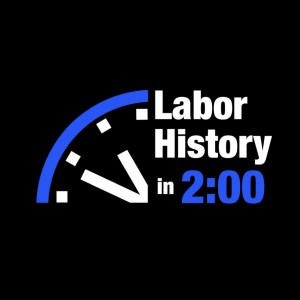
- Podcast Features
-
Monetization
-
Ads Marketplace
Join Ads Marketplace to earn through podcast sponsorships.
-
PodAds
Manage your ads with dynamic ad insertion capability.
-
Apple Podcasts Subscriptions Integration
Monetize with Apple Podcasts Subscriptions via Podbean.
-
Live Streaming
Earn rewards and recurring income from Fan Club membership.
-
Ads Marketplace
- Podbean App
-
Help and Support
-
Help Center
Get the answers and support you need.
-
Podbean Academy
Resources and guides to launch, grow, and monetize podcast.
-
Podbean Blog
Stay updated with the latest podcasting tips and trends.
-
What’s New
Check out our newest and recently released features!
-
Podcasting Smarter
Podcast interviews, best practices, and helpful tips.
-
Help Center
-
Popular Topics
-
How to Start a Podcast
The step-by-step guide to start your own podcast.
-
How to Start a Live Podcast
Create the best live podcast and engage your audience.
-
How to Monetize a Podcast
Tips on making the decision to monetize your podcast.
-
How to Promote Your Podcast
The best ways to get more eyes and ears on your podcast.
-
Podcast Advertising 101
Everything you need to know about podcast advertising.
-
Mobile Podcast Recording Guide
The ultimate guide to recording a podcast on your phone.
-
How to Use Group Recording
Steps to set up and use group recording in the Podbean app.
-
How to Start a Podcast
-
Podcasting
- Podcast Features
-
Monetization
-
Ads Marketplace
Join Ads Marketplace to earn through podcast sponsorships.
-
PodAds
Manage your ads with dynamic ad insertion capability.
-
Apple Podcasts Subscriptions Integration
Monetize with Apple Podcasts Subscriptions via Podbean.
-
Live Streaming
Earn rewards and recurring income from Fan Club membership.
-
Ads Marketplace
- Podbean App
- Advertisers
- Enterprise
- Pricing
-
Resources
-
Help and Support
-
Help Center
Get the answers and support you need.
-
Podbean Academy
Resources and guides to launch, grow, and monetize podcast.
-
Podbean Blog
Stay updated with the latest podcasting tips and trends.
-
What’s New
Check out our newest and recently released features!
-
Podcasting Smarter
Podcast interviews, best practices, and helpful tips.
-
Help Center
-
Popular Topics
-
How to Start a Podcast
The step-by-step guide to start your own podcast.
-
How to Start a Live Podcast
Create the best live podcast and engage your audience.
-
How to Monetize a Podcast
Tips on making the decision to monetize your podcast.
-
How to Promote Your Podcast
The best ways to get more eyes and ears on your podcast.
-
Podcast Advertising 101
Everything you need to know about podcast advertising.
-
Mobile Podcast Recording Guide
The ultimate guide to recording a podcast on your phone.
-
How to Use Group Recording
Steps to set up and use group recording in the Podbean app.
-
How to Start a Podcast
-
Help and Support
- Discover

On this day in labor history, the year was 1933.
That was the day garment factory owners locked out dressmakers in several shops throughout Los Angeles.
The women garment workers, overwhelmingly Mexican, had been organizing with the ILGWU for over a month.
They began conducting strikes at selected shops the previous month to press their demands.
The women wanted union recognition, a thirty-five hour workweek, an end to homework, shop floor committees, a guaranteed wage and more.
Historian Douglas Monroy observes that their demands reflected the harsh working conditions they faced.
It was a volatile, competitive, seasonal industry.
Businesses worked tirelessly to undercut each other and job out the work.
Women workers were routinely unemployed or underemployed, subject to widespread wage theft and discrimination.
They were frustrated by promises of the new National Industrial Recovery Act, which promised the right to organize but held no provisions for enforcement.
Employers flaunted the new legislation and continued to discharge workers for union activity.
When the employers forced a lockout, Local 96 looked to the AFL’s Central Labor Council to sanction a general dressmakers strike, which started four days later on October 12.
As many as 3,000 Latina strikers maintained solid picket lines, despite dozens of arrests.
ILGWU organizer Rose Pesotta arrived from New York to help with food distribution and packing the picket lines.
The rank and file leadership produced a bilingual strike bulletin and made daily radio announcements.
The strike ended in arbitration that conceded few gains to the garment workers.
But the women of Local 96 continued to organize throughout the Los Angeles area.
They led a series of strikes that finally won the closed shop in 1936.
More Episodes
 2025-03-23
2025-03-23
 2025-03-21
2025-03-21
 2025-03-20
2025-03-20
 2025-03-16
2025-03-16
 2025-03-15
2025-03-15
 2025-03-14
2025-03-14
 2025-03-13
2025-03-13
 2025-03-12
2025-03-12
 2025-03-11
2025-03-11
 2025-03-10
2025-03-10
 2025-03-09
2025-03-09
 2025-03-08
2025-03-08
 2025-03-07
2025-03-07
 2025-03-06
2025-03-06
 2025-03-05
2025-03-05
Create your
podcast in
minutes
- Full-featured podcast site
- Unlimited storage and bandwidth
- Comprehensive podcast stats
- Distribute to Apple Podcasts, Spotify, and more
- Make money with your podcast
It is Free
- Privacy Policy
- Cookie Policy
- Terms of Use
- Consent Preferences
- Copyright © 2015-2025 Podbean.com


